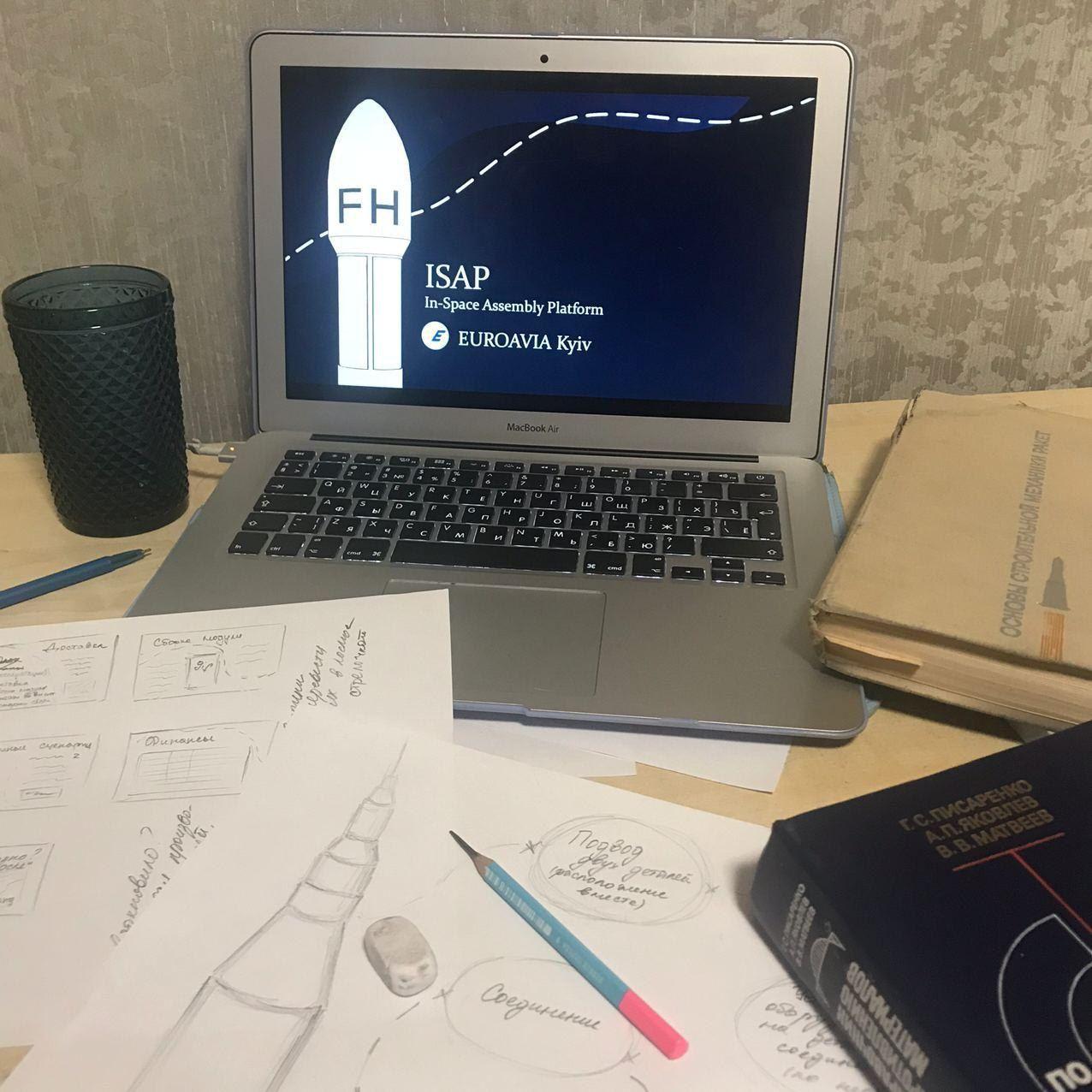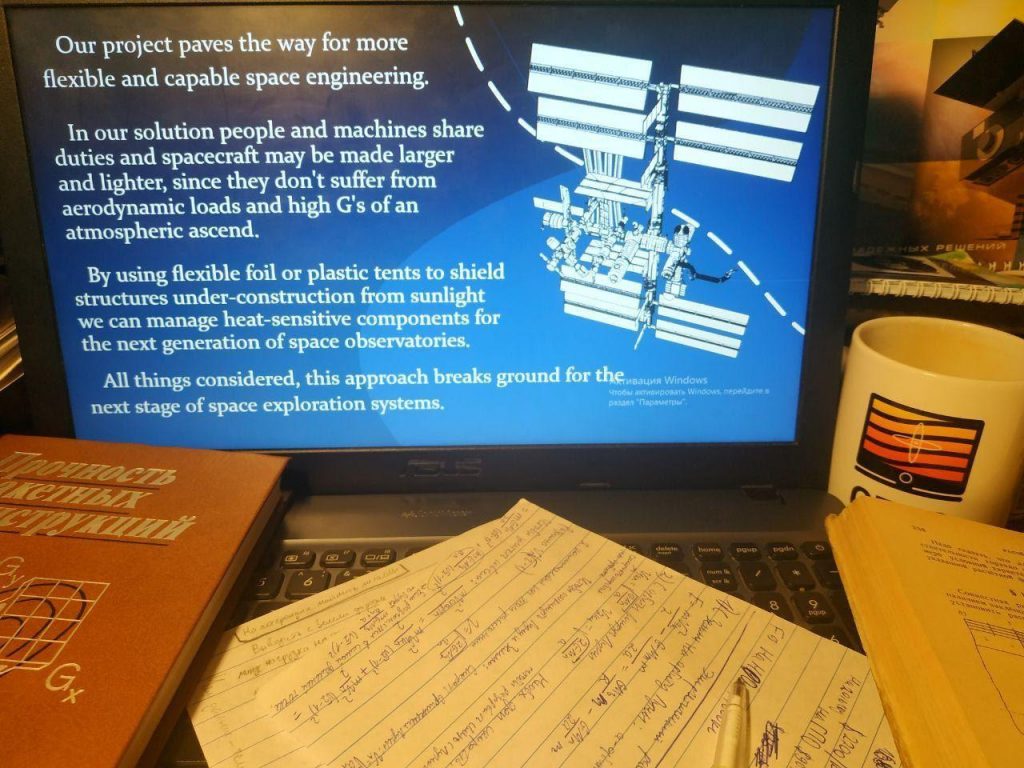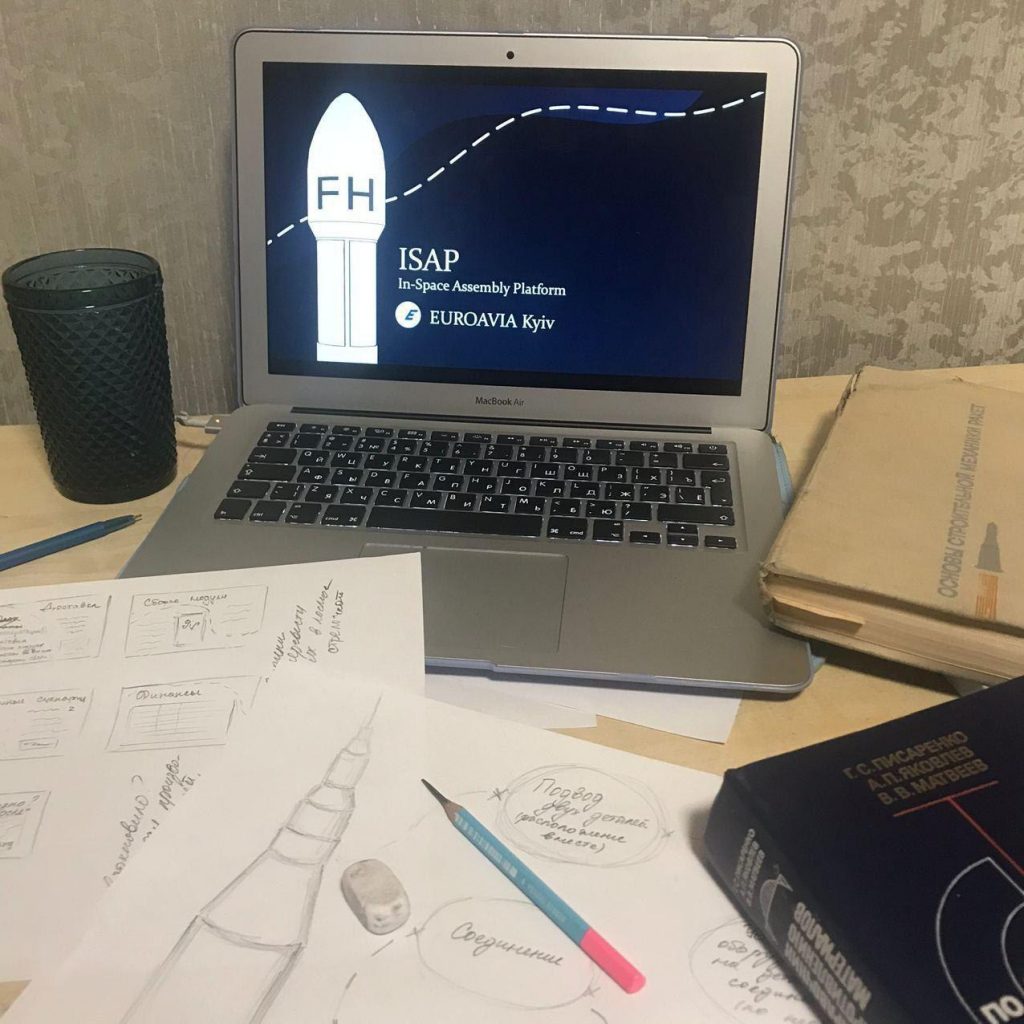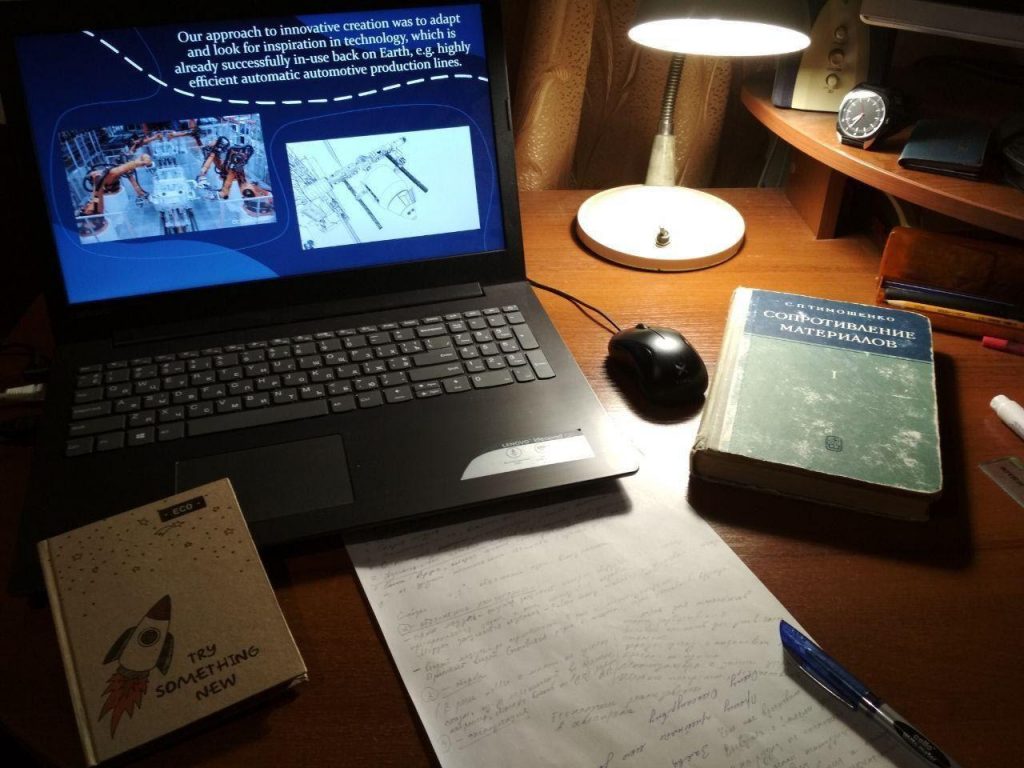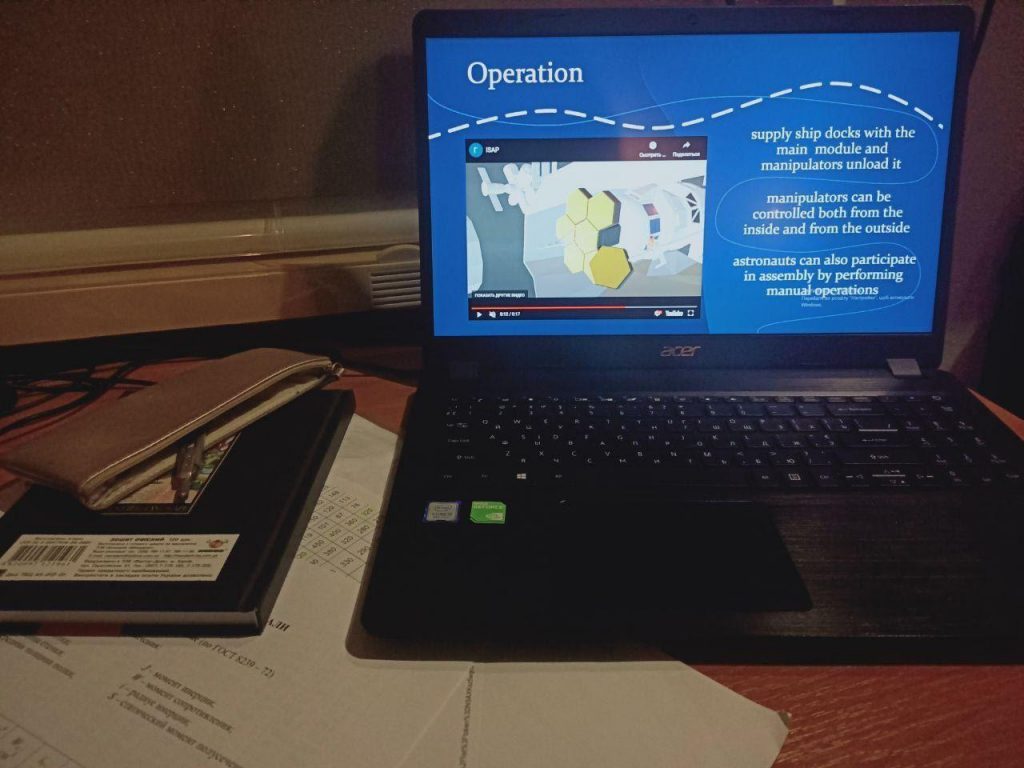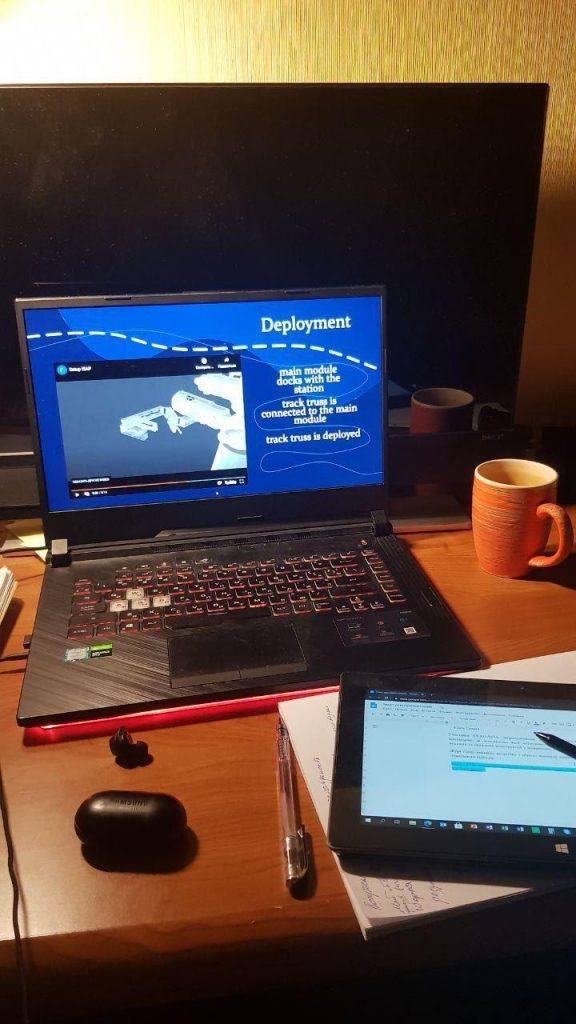🚀 До складу команди увійшли студенти другого та третього курсів Інституту аерокосмічних технологій:
· Астахова Ольга
· Воєйкова Софія
· Потапенко Ірина
· Тараш Георгій
· Татаровський Максим
· Тітов Генріх
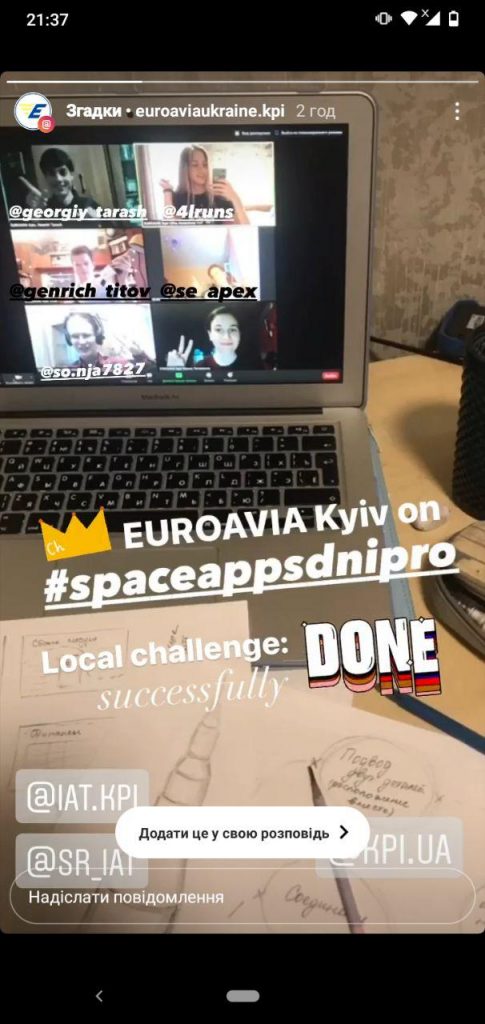
3 – 4 жовтня 2020 року учасники київського відділу міжнародної студентської організації «EUROAVIA» взяли участь у хакатоні «NASA Space Apps Challenge», що проходив у м. Дніпро в онлайн форматі за підтримки ГО «Noosphere».
Студенти представили свій проект «In-Space Assembly Platform» (ISAP) в рамках челленджу Let’s Connect.
Учасники EUROAVIA запропонували створити спеціальну модульну платформу, за допомогою якої астронавти можуть здійснювати збірку великих та складних конструкцій у відкритому космосі.
Журі гідно оцінило розробку і обрало команду одним з двох переможців локального відбору.

Let’s Connect
For bigger spacecraft capable of executing bigger missions, some of the assembly may be done in space. Your challenge is to design a simple approach that enables components to be assembled in space.
In-Space Assembly Platform (ISAP)
Summary
Despite the fact that today technology develops faster than ever before, assembling and launching a rocket is still an excessively difficult and costly process. We believe there may be a way to bypass its limitations and Earth’s gravitation itself – our idea is to create a space dock-module with all the necessary equipment and manipulators for in-space assembly.
How We Addressed This Challenge
We have developed a system consisting of two parts. First, an airtight control module, to which supply ships and the system that is being constructed are attached, arrives, and is docked at the station. Then, the second part – the foldable truss module is connected. This element will enable rail-based manipulators and tool storages to move along its sides. Our technology will make creating massive structures in orbit possible, as modern commercial launchers are capable of delivering various payloads to LEO. Using pre-assembled components, delivered by private contractors, the system will be able to construct ships and stations, larger than we could ever imagine, for deep space exploration. Therefore ISAP reduces the cost of future missions and helps the most ambitious dream projects turn real. Our hope is to make way for a new era in space engineering.
How We Developed This Project
Created to create.
We, humans, are born explorers. Since our first steps in space in 1950s, we have dreamt of conquering space – the final frontier. Outer space exploration has, for years, been providing humanity with inspiration for many marvelous inventions. However, we had to learn that there are certain limitations, even to dreaming. Today, we still have to deal with a few problems that make deep space exploration missions extremely difficult, among which are the high cost and the complexity of assembling massive space systems on Earth and launching them into orbit. We came up with our solution for this problem. Using Blender, a professional free and open source 3D computer graphics software, we visualized our vision of the system that enables us to assemble spacecraft and telescopes in orbit. Since the solution was created on the basis of the ISS and existing robotic mechanisms, it can be implemented in the foreseeable future at a relatively affordable cost. At the same time, we believe that our concept is universal, and can be used with other prospected space stations.
How We Used Space Agency Data in This Project
First of all, we have surveyed current and planned space exploration missions of NASA and its’ partner agencies, to better understand whether there is demand and need for such a system. For if there had been no ambition for exploration, there would have been no innovative technologies and spaceship designs.
Next, we studied professional opinions on in-space assembly. NASA engineers and scientists have studied it’s ups and downs in context of constructing telescopes.
Moreover, we had to choose the best manipulator for our system. It is crucial to ensure safe movement of astronauts, equipment and materials around the working zone. That’s where we got to the CSA’s site to learn everything about Canadarm.
ISS initiative has shown us various benefits of having a permanent outpost in space. It was important to master all kinds of space activities on LEO to succeed with prospective missions to other worlds of our Solar System. So it was really important to learn more about ISS’ experience in terms of testing new technologies and dealing with unexpected problems, which lays the foundation for our future space ventures.
Project Demo
https://docs.google.com/presentation/d/1o-Uci4HIbrb30_xFSJgq7_D2lXYpnTg3GoLjbAjT9mE/edit?usp=sharing
Data & Resources
https://www.asc-csa.gc.ca/eng/iss/canadarm2/canadarm-canadarm2-canadarm3-comparative-table.asp
https://www.asc-csa.gc.ca/eng/iss/dextre/about.asp
https://www.nasa.gov/specials/artemis/
https://science.nasa.gov/technology/technology-highlights/in-space-telescope-assembly
https://exoplanets.nasa.gov/exep/technology/in-space-assembly/
https://www.kuka.com/de-de/%C3%BCber-kuka/unternehmensstruktur
https://grabcad.com/library/international-space-station-iss-1
Judging
This project has been submitted for consideration during the Space Apps Judging process.

